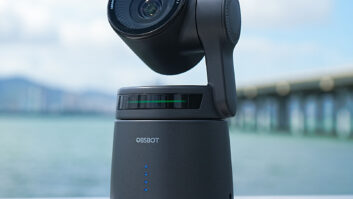Several vendors trotted out new digital cameras shortly before and during PC Expo as the holiday lineups start to take shape.
Canon continued its push into the entry-level digital camera market with the introduction of the PowerShot A200 model. The PowerShot A200 will be available in July and have a suggested retail price of $299.
Like all new Canon consumer level cameras, the 2-megapixel PowerShot A200 can connect directly to Canon’s portable CP-100 dye-sublimation printer. The camera can also be used with its optional waterproof housing to depths of up to 100 feet.
Canon has brought some higher-end features previously introduced on the PowerShot G2 down to the A200, like the Photo Effects mode. A low sharpening mode has been added to the vivid, neutral, sepia and black-and-white modes for a total of five separate effects modes on the camera.
Optically, the A200 is a single-focal length autofocus camera with 3-point AiAF focusing, high-speed continuous shooting at 2 frames per second (fps), 4x digital zoom, built-in flash with four flash modes and RGB primary color filters.
In movie mode the camera can record movies in QVGA (320×240 pixels) and Q2VGA (160×120 pixels) at 20 fps. Up to 9 seconds of continuous recording is possible in QVGA, and up to 26 seconds in the Q2VGA format. The camera also
features a 10x magnified playback on the 1.5-inch LCD screen.
The A200 uses two AA batteries and is compatible with CompactFlash Type I removable media.
According to product manager Scott Nelson, Casio is emphasizing size (or, more precisely, lack thereof) as they make a big push into the digital camera market.
The company debuted two models at PC Expo, the 4-megapixel QV-R4 and the 3-megapixel QV-R3, both of which will ship in July. The QV-R4 will have a suggested retail price of $499.99 and the QV-R3 will carry a $399.99 suggested retail price.
Both cameras feature a 3x optical zoom and 3.2x digital zoom. The cameras sport a .01 second shutter lag, currently the fastest among consumer-level digital cameras, according to Nelson. The cameras are SD memory compatible and feature 11MB of internal memory for additional storage.
Casio has introduced a new feature called “Coupling Shot” to both cameras. The mode allows a picture taker to snap a picture of a subject, then a transparent image of that photo appears on the LCD screen, allowing a second person to shoot the picture taker in the same background. The image is then fused, showing both individuals in the same setting.
In the entry-level end of the market, SiPix announced its new StyleCam Deluxe 5-in-1 handheld digital camera at a suggested $79.99.
Available in August, the camera functions both as a 1.3-megapixel digital still camera and a Webcam. It records up to 60 seconds of video with audio, or records 53 minutes of audio.
The StyleCam Deluxe can function as a digital still camera, a digital video camera for short intervals, an audio recorder and a PC/video conferencing camera. It ships with 16MB of internal memory.
Toshiba came to PC-Expo with its second-generation touch-screen LCD digital camera, the PDR-T20. Succeeding the PDR-T10, the company’s first digital camera with a touch-screen LCD and interchangeable faceplates, the new PDR-T20 will forgo the interchangeable faceplates but keep the touch screen and 2.01 million-pixel CCD.
The T20 has a suggested retail price of $399 and will ship in July. It comes equipped with a 2x optical zoom lens (equivalent to a 38-76mm lens on a 35 mm camera), plus a 3x digital telephoto mode.
The camera has auto and manual white balance and exposure control, a self-timer, multizone TTL metering, shutter speeds from 1 second to 1/1000 second, and a pop-up flash with auto, forced, suppressed and red-eye reduction modes that have an operating range up to 10 feet for added versatility.
The camera’s Scene Mode automatically adjusts to the optimum settings according to the type of subject selected, such as portrait, landscape, sports and night view.
The touch-screen LCD allows users to navigate through the camera’s various shooting and playback modes by tapping icons on the LCD with the included stylus.
The main touch panel is located on the left side of the camera’s 1.5-inch color LCD and contains three icons — display, menu and erase — that serve as starting points for all camera controls. Tapping on one of these buttons brings up a complete set of menus across the entire LCD panel.
It comes bundled with an 8MB SD card and is compatible with SD cards up to 256MB.











